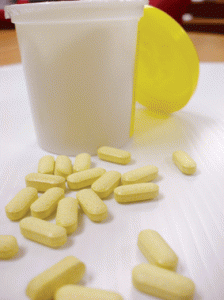Drugs infiltrate college sports
by Blaine Meller
The issue of drugs in sport in not new. When sprinter Ben Johnson tested positive following the 1988 Summer Olympics in Seoul, South Korea, it sent a shockwave throughout the Canadian sports landscape.
Since then, there have been allegations too numerous to count, with high-profile athletes such as Lance Armstrong, Barry Bonds and Roger Clemens each being accused of using performance enhancing substances. The problem, however, does not appear to be exclusive to professional sports. On Sept. 16, the Canadian Centre for Ethics in Sport (CCES) announced that Brandon Cato, a male basketball player from Fanshawe College in Ontario, received a one-month suspension resulting from the use of cannabis.
This comes on the heels of the three-year ban of a University of Waterloo football player who tested positive for human growth hormone and elevated levels of testosterone. These results are not exclusive, as CCES statistics show a number of Canadian Colleges Athletic Association (CCAA) athletes being sanctioned in the past three years. Mount Royal is a member of the CCAA.
Between April 2009 and March 2010, the CCES conducted 3,801 drug tests on student athletes, national- level competitors and those in various sports organizations. There were 24 sanctions levied, ranging from reprimands to a three-year ban from competition. These results come despite an extensive and proactive approach by the CCES and its member agencies, such as the CCAA and Alberta Colleges Athletic Conference.
“Every student athlete that competes in CCAA championship sports is required to complete an online drug seminar,” said Karla Karch, Mount Royal University’s manager of athletics. “They cannot compete unless they do it. It’s a CCAA requirement.”
Student-athletes are subjected to two types of test: announced and unannounced. Announced tests can take place at training camps and both provincial and national competitions, while un- announced tests can be administered at any time on a short- or no-notice basis. Athletes can be tested either by random selection or as a result of someone requesting they be tested specifically.
“People will be tested at the national championships, without question. Some members of the gold and silver medal winning teams will be tested right after the game,” Karch said, adding that in some cases, members of the bronze medal team would be tested as well.
Testing is done under extremely tight scrutiny, with selected athletes providing samples as soon as possible following competition (at provincial and national championships). The athletes selected for testing will be watched and followed by an appointed spotter, who has full access to team meetings and locker rooms. Once the spotter is introduced to the athlete, a series of paperwork and procedures are followed and the sample is taken under the spotter’s supervision. The athlete is allowed to have a representative accompany them.
An initial sample is collected and tested, and if positive, the athlete is notified and the sample will be re-tested. If the test is positive, the athlete is subject to discipline by the CCES. However, student- athletes could be subject to discipline from their respective colleges and universities as well.
Karch said that if a Cougar athlete tested positive, she would submit a report to the Office of Student Conduct to appear on their permanent record. Depending on the severity of the incident, the student-athletecouldbesubject to further sanctions following a hearing, or she could recommend a specific course of action.
Once the athlete has been formally suspended and is no longer part of a team, they cannot be forced into treatment, although Karch said the athlete would be encouraged to get help in terms of counseling, therapy or whatever may be needed.




